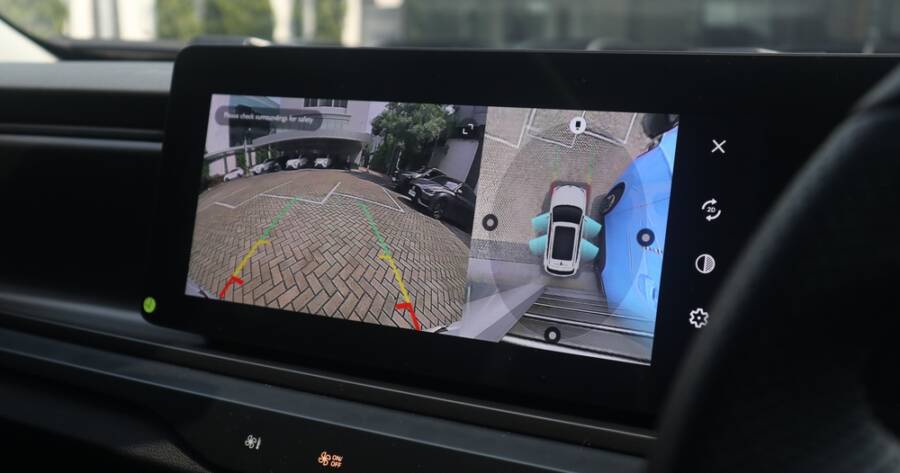In an era where technology drives innovation, modern cars come equipped with an array of safety features designed to protect drivers, passengers, and pedestrians alike. As these features evolve, choosing the right car can become a daunting task. Understanding what to look for can help ensure a safer driving experience. So what essential safety features are common in today’s vehicles?
Advanced Driver Assistance Systems (ADAS)
Advanced Driver Assistance Systems (ADAS) encompass a suite of technologies aimed at enhancing vehicle safety through automation and improved decision-making. These systems include features like adaptive cruise control, lane departure warnings, and automatic emergency braking.
By potentially reducing human error, ADAS might help prevent accidents before they occur. While these tools are not infallible, the added layer of assistance may contribute to a more secure driving experience.
Airbag Systems
Modern airbag systems go beyond the traditional front airbags, offering side, knee, and curtain airbags designed to cushion occupants from impact. The placement and deployment speed of airbags can vary among manufacturers, potentially enhancing their effectiveness in the event of a collision. With ongoing advancements, some airbags may even adjust based on the severity of a crash, offering a tailored level of protection.
Blind Spot Detection
Blind spot detection employs sensors to monitor areas that are difficult for drivers to see, typically alerting them through visual or auditory cues if another vehicle is present.
This feature could be particularly beneficial during lane changes, minimizing the risk of side-swipe accidents. As sensor technology advances, the accuracy and reliability of blind spot detection systems may continue to improve, enhancing overall driver confidence.
Electronic Stability Control (ESC)
Electronic Stability Control (ESC) is a crucial safety feature that works to maintain vehicle stability by detecting and reducing loss of traction. In slippery conditions, ESC can automatically apply brakes to individual wheels, assisting drivers in maintaining control.
While not a substitute for cautious driving, ESC may provide an extra measure of support in challenging weather conditions, potentially preventing skids and rollovers.
Rearview Cameras
Rearview cameras have become standard in new vehicles, providing drivers with a clear view of what’s behind them during reversing. This feature aims to mitigate the risk of back-over accidents, which can occur when objects or people are in the car’s rear blind spot.
With some systems offering 360-degree video coverage, the overall visibility for the driver can be greatly enhanced, although careful attention and contextual awareness remain critical.
Tire Pressure Monitoring Systems (TPMS)
Proper tire inflation is key to vehicle safety, as under-inflated or over-inflated tires can lead to blowouts or poor handling. Tire Pressure Monitoring Systems (TPMS) alert drivers to significant changes in tire pressure.
Maintaining correct tire pressure could contribute to optimal tire performance and fuel efficiency. With technological advancements, newer TPMS may offer real-time monitoring and more detailed data.
Anti-lock Braking System (ABS)
The Anti-lock Braking System (ABS) helps prevent wheel lock-up during braking, maintaining steering control and potentially reducing stopping distances. This feature works by pulsing the brakes during an emergency stop, allowing drivers to maintain control.
Since the effectiveness of ABS can vary depending on road conditions, it remains important for drivers to understand their vehicle’s specific system and adapt their response accordingly.
Adaptive Headlights
Adaptive headlight systems are designed to improve night driving by adjusting the angle and range of headlights based on speed, steering input, and road conditions.
These systems may enhance visibility around curves and over hills, offering a more illuminated view of the road ahead. As with all safety technologies, adaptive headlights should be viewed as an enhancement rather than a replacement for cautious driving.
Stay Safe on the Road
While modern cars are increasingly equipped with sophisticated safety technologies, these features should complement, not replace, vigilant and responsible driving. Understanding the potential benefits of features such as ADAS, airbags, and blind spot detection can guide informed decisions when purchasing a vehicle.
Continual advancements in automotive safety may offer drivers enhanced protection, contributing to safer roads for everyone. Always consider personal driving habits and needs when evaluating the various safety features available in modern cars.

